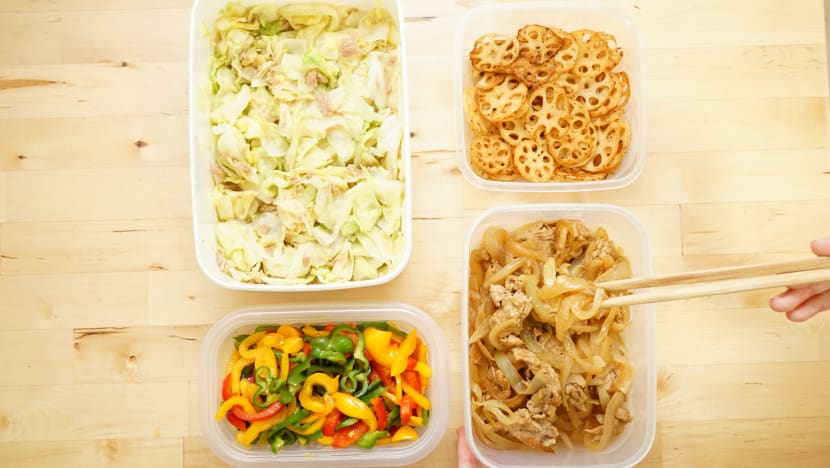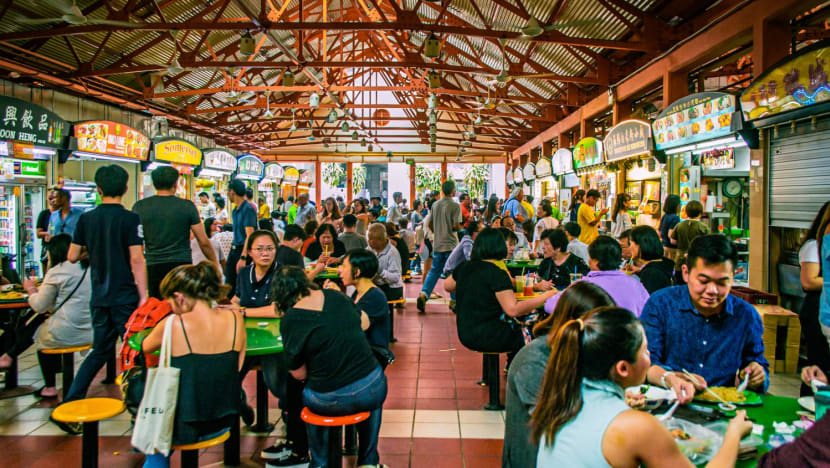Commentary: Singapore has seen less plastic bag usage. Why not the same for food containers?
Efforts to promote Bring-Your-Own (BYO) culture in Singapore have seen limited results. Systemic change is needed to tackle the disposable waste issue, says Muuse CEO Jonathan Tostevin.

In 2020, 200,000 tonnes of single-use packaging items were thrown away in Singapore, equivalent in scale to 4,000 HDB flats. (Photo: iStock/maroke)

This audio is generated by an AI tool.
SINGAPORE: Over the past few years, there has been growing consciousness about the environmental impact of single-use packaging, including carrier bags, food containers and utensils.
Yet we still use large amounts of disposables, particularly when we get takeaway food and drinks. In 2020, 200,000 tonnes of disposable items were thrown away, equivalent in scale to 4,000 HDB flats.
The mandatory 5-cent charge for disposable carrier bags, implemented in July 2023, has reduced plastic bag usage by up to 80 per cent across Singapore supermarkets. However, efforts to promote Bring-Your-Own (BYO) culture for food containers and cutlery have seen limited results.
In 2021, non-governmental organisation Zero Waste Singapore partnered with five hawker centres to launch a campaign promoting BYO to patrons. The campaign emphasised cost savings and benefits to the environment and hawkers, but only about 5 per cent of customers brought their own containers to "dabao" or take away food.
Many cafes and restaurants offer discounts to customers who bring their own reusables, but also report low adoption rates.
This indicates that there’s a higher barrier to adoption for takeaway containers. Consumers typically dabao regularly, and it’s far bulkier to carry your own utensils, lunch box, and bottle everywhere compared to a few shopping bags. In addition, shopping bags don’t need to be washed after use, unlike reusables that have stored noodle soup or milky coffee.
The evidence suggests that financial incentives alone won’t cut it. The change needs to be more systemic and fundamental if we want to tackle Singapore’s disposable waste issue. So how can we shift the needle?
SYSTEM CHANGE, NOT PRODUCT CHANGE
Plastic disposables in particular often receive the most focus, but other single-use alternatives also carry similar environmental risks. Paper-based items, for example, often have a larger carbon footprint and require more resources to manufacture compared to plastic packaging.
The “compostable” or “biodegradable” sector is ill-defined, and because most waste is incinerated in Singapore, the environmental benefits of these materials are not realised.
Companies like ours provide reusable packaging as a service, making it available at the point of sale and ensuring it gets cleaned after customers return it. In Muuse’s pilot programme at the Hawker Centre at Our Tampines Hub, over 600 people borrowed and returned almost 10,000 reusable containers over 10 months, the equivalent to the amount of single-use containers used across 19 days at the hawker centre.
What stands in the way of scaling initiatives like these?
SCALING UP THE USE OF REUSABLE PACKAGING
The main obstacle is that it’s currently too cheap and too easy to use disposable packaging.
Single-use packaging has achieved vast economies of scale, both in its production and distribution but also in its collection with general trash bins on almost every street.
Waste collection is subsidised by the government and funded through citizen taxes. Reusable packaging providers have to cover the cost of “closing the loop” that disposable providers can currently avoid.
Scale is required to realise the benefits of reuse, with as many return stations for reusables, as there are trash cans for general waste.
Without an overall system or infrastructure easily understood by consumers, it’s difficult for individual vendors to provide reusable packaging services on their own. The challenges of creating a new system, culture and habits are too much for individual vendors to take on. It is too much added complexity and cost, particularly if their direct competitors are avoiding it. Customers will simply go elsewhere.
THE SOLUTIONS
Placing some “hard” disincentives such as taxes or bans on disposable packaging has to be part of the solution. The negative externalities of disposable packaging, as well as the costs of collecting and disposing the items are currently not factored into their pricing.
Yet, as we’ve seen from BYO campaigns, the financial savings from a more sustainable option are not enough to affect mainstream behaviour.
We also need to build the right infrastructure. We need to think about reusable packaging infrastructure as the next “waste” channel. The infrastructure is simpler than that required for recycling or landfill, but still requires dedicated washing hubs and logistics to support it.
Standardised containers would simplify the system and ensure high hygiene standards. QR code or RFID tracking would help with tracking, accountability and stock management. This is what a more sustainable city of the future could look like.

Alongside that, setting reuse targets for specific industries could be an effective intervention, for stakeholders in those sectors to make sure the infrastructure and communications are in place.
Our universities, food courts and hawker centres could all be designated “Reuse Hubs”, where a national standard of reusable packaging is provided as a default, with collection points and dedicated washing infrastructure at each location. This also helps build collective action between vendors, landlords and the wider food services industry, rather than requiring one actor to shoulder the whole burden.
System change isn’t easy. Building the foundations of the circular economy is not straightforward. It requires intervention and new thinking about our economy to shift behaviour and ultimately preserve our planet for future generations.
Jonathan Tostevin is CEO of Muuse.


















